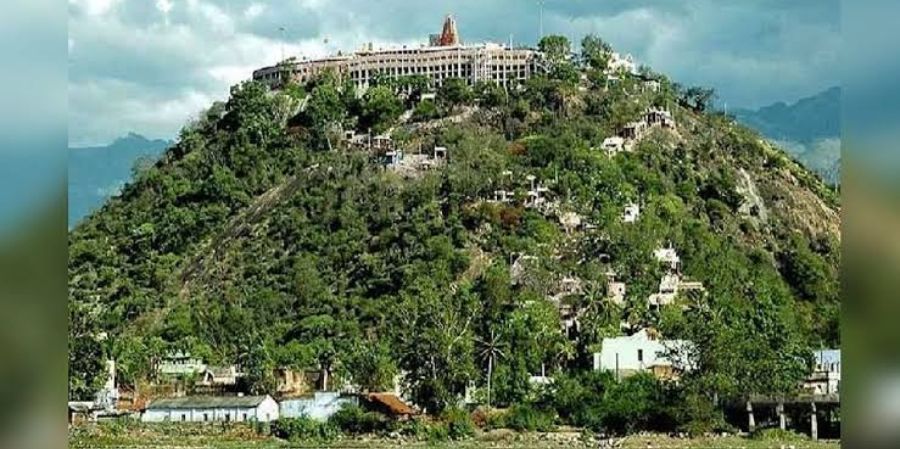

The third of Murugan's six abodes, Arulmigu Dhandayuthapani Swamy Temple is known as Aarupadai veedugal. It is situated in the Palani Hills foothills, in the Tamil Nadu state of India, 100 kilometres (62 miles) southeast of Coimbatore and northwest of Madurai, in the city of Palani, formerly known as Thiruaavinankudi (as stated in the old Sangam literature Thirumurugatrupadai). Panchamritam, a delicious concoction comprised of five components, is often associated with the Palani temple.
According to Hindu mythology, Sage Narada went to Shiva's heavenly throne on Mount Kailash to give him a fruit known as the gnana-palam (literally, the fruit of wisdom). He made the decision to give it to whichever of his two boys completed the first triple-circle of the planet. Murugan accepted the challenge and set out on his mount Peacock to travel the world. Ganesha, who believed that the world was nothing more than the sum of his parents, Shiva and Shakti, circumambulated them and triumphed in the fruit, though. Furious and feeling the need to grow up, Murugan made the decision to live as a hermit in Palani.One of Hinduism's eighteen famous siddhar, sage Bogar, used nine deadly herbs, or Navapashanam, to make the idol of the Muruga in Palani.
A winch and rope car service is available to convey worshippers uphill in addition to the stairs and sliding elephant route. On festival days, when the temple is open from 4.30 a.m., six poojas are performed from 6.00 a.m. to 8.00 p.m., as well as special poojas.
With 33 crore collected between July 2015 and June 2016, the temple was the wealthiest among those in the Tamil Nadu state as of that year.[Needs citation] The Hindu Religious and Charitable Endowments Department of the Tamil Nadu government is in charge of maintaining and running the temple.
𝙃𝙞𝙨𝙩𝙤𝙧𝙮:
Sage Bogar (Bhoga Muni), one of Hinduism's eighteen famous siddhas, used nine rocks to make the idol of the Muruga in Palani, and then he dedicated it. Pashu denotes poison in Sanskrit. According to mythology, the sculptor had to work quickly to finish the feature and perfect it. Later, some individuals with access to the deity employed repulsive chemicals and stole from the idol's contents, severely harming the idol and fueling conspiracies that the sage had not done as well of a job on the exterior characteristics as he had on the face.
After decades of worship, the deity was abandoned and allowed to be consumed by the forest. Perumal, a monarch of the Chera Dynasty who ruled the region during the second and fifth century A.D., became separated from his hunting group one night and was compelled to seek safety at the base of the hill. As a result, the Subrahmanyan appeared to him in a dream and gave him the instruction to return the idol to its original state. The monarch started looking for the idol, and when he did, he built the temple where it now resides and reinstated its devotion. A modest stela at the bottom of the inclining stairs up the hill honours this.
